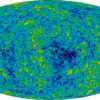Researchers have demonstrated the ability to grow high-quality thin films of a recently discovered superconductor material called potassium tantalate (KTaO3). The researchers also discovered that the material retains its superconductive characteristics even when exposed to extremely high magnetic fields.
A superconductor is a material that can carry electricity without any resistance—meaning none of the energy is dissipated as heat, for example. Superconductive materials hold promise for making a variety of more efficient technologies, such as faster computer components and more energy-efficient power devices. However, the field faces significant challenges. For example, many superconductive materials lose their superconductivity when exposed to magnetic fields, which limits their potential applications.
“Our work here is important because not only have we demonstrated how to fabricate high quality KTaO3, but we have also shown that the material is capable of withstanding substantial magnetic fields without losing its desirable properties,” says Kaveh Ahadi, corresponding author of three papers on the work and an assistant professor of materials science and engineering at North Carolina State University.
“Specifically, we found that KTaO3 retains superconductivity even when exposed to magnetic fields up to 25 Tesla. This fundamental work is a necessary step toward the development of any potential applications for the material.”
The researchers were able to “grow” KTaO3 using a technique called molecular beam epitaxy, which effectively creates two-dimensional (2D) thin films of the material on a substrate by laying molecule-thin layers on top of one another with atomic-level precision. The resulting thin films have extremely high quality, meaning the molecular structure of the material has very few defects.
“These high-quality thin films are an ideal platform for studying the intrinsic properties of this materials system,” Ahadi says.
One such characterization study revealed that KTaO3 thin films remained superconductive when exposed to magnetic fields of up to 25 Tesla. To put that in context, the only place in the United States capable of generating a 25 Tesla magnetic field is the National High Magnetic Field Laboratory, which is where Ahadi and his collaborators tested the material.
“The research community is still in the early stages of understanding the superconductivity in KTaO3, much less identifying applications for the material,” Ahadi says. “Our work here not only identifies one attractive quality that sets it apart from other 2D superconductors, but provides a blueprint for how we can create KTaO3 thin films that are well suited for performing the research necessary to understand intrinsic properties of this materials system.”
The research is covered in three journal articles. Most recently, the paper “Enhanced Critical Field of Superconductivity at an Oxide Interface” was published July 27 in Nano Letters. Co-first authors of that paper are Athby Al-Tawhid, a postdoctoral researcher at NC State; and Samuel Poage, a Ph.D. student at NC State.
A second characterization article, “Anisotropic superconductivity at KTaO3(111) interfaces,” was published earlier this year in Science Advances. The journal article covering the ability to grow KTaO3 using molecular beam epitaxy, “Molecular beam epitaxy of KTaO3,” was published earlier this year in the Journal of Vacuum Science & Technology A.
More information:
Athby H. Al-Tawhid et al, Enhanced Critical Field of Superconductivity at an Oxide Interface, Nano Letters (2023). DOI: 10.1021/acs.nanolett.3c01571
Ethan G. Arnault et al, Anisotropic superconductivity at KTaO 3 (111) interfaces, Science Advances (2023). DOI: 10.1126/sciadv.adf1414
Tobias Schwaigert et al, Molecular beam epitaxy of KTaO3, Journal of Vacuum Science & Technology A (2023). DOI: 10.1116/6.0002223
Provided by
North Carolina State University
Citation:
Researchers ‘grow’ high quality superconductor, find resilience against magnetic fields (2023, July 27)



